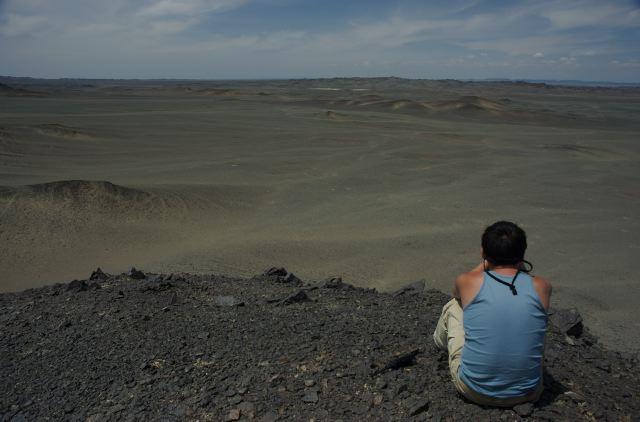Adiya Yadamsuren
Establish community participatory wild camel survey and monitoring mechanism to ensure ownership of local community in biodiversity conservation. Train and promote local community people a Local People and Ranger (LPR).

Looking for Wild Camels in Great Gobi A SPA. Mongolia.
GGSPA A is the biggest protected area in south-west Mongolia which is covering an area of 44.000 sq.km. GGSPA A south borders with Mazongshan, Gansu province in China, act as significant biological for desert fauna.
To resolve and address such conservation challenges, community participatory wild camel conservation initiatives will be effective conservation tools and will be able to develop community monitoring, capacity building of local community people to promote them as Local People and Ranger (LPR), and undertake permanent monitoring transects and conservation awareness campaigns. Finally, community based monitoring mechanisms will be established and regular monitoring will continue under local people as long-term conservation.
Several published and unpublished documents (books, articles, and research reports unpublished data) will review thoroughly and will guide on drafting monitoring protocol. These include the IUCN translocation guidelines Consultation workshop: Both export and local stakeholder's consultation will conduct in local and national level. Export (researchers, park managers and freelance working on the wild camel ecology and legal experts) will be consulted to gather expert’s opinion and advice for drafting a monitoring protocol. As well, local stakeholders involve directly or indirectly for conservation of wild camel conservation will be consulted to review prior conservation activities. This consultation will help to assess stakeholders’ current and potential roles for wild camels monitoring and conservation.
Local people (10-14 rangers) will be selected based on their controlled area in conservation of wild camel from local unit, camel herders and park staff. Field based training will be organized for three weeks to capacitate them as local citizen scientist for monitoring of wild camel inside wild camel habitat.
Conservation motivates and wild camel theory class will be carried with aim to sharing information ecology of wild camels, habitats, major conservation challenges, and own responsibility for conservation. In field based training, participants will be trained on survey techniques of wild camels, equipment handling, and field data collection management.